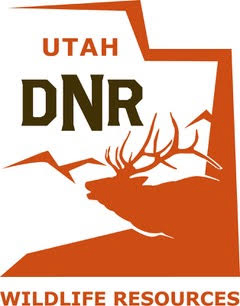How to Dial in Your Deer Gun
By Glen Wunderlich
With relatively moderate temperatures still with us, it’s best to get your favorite deer gun sighted in properly while conditions cooperate. By procrastinating, you may be relegated to testing during cold and windy days, which can end up being a total waste of time and expensive ammunition.
While it may be true that wind can be present in hunting situations, you certainly don’t want to adjust aiming points relative to any substantial crosswinds, when they probably won’t be the same later. It’s best to select a calm day for testing; any adjustments necessary during a hunt should be made afield based on the conditions that day, instead. Crosswinds cause substantially greater deflection of a given projectile than do headwinds or tailwinds. So, if you must sight in with the wind blowing, line up your target directly downwind or upwind, if at all possible.
A six-inch target will provide a necessary margin for error for deer-sized targets, even though the actual kill zone is larger. Orange squares with the black outlines are good for scoped guns and plain black circles or squares are best for iron sights, red dot sights.
Start with a clean, unloaded gun ensuring there is no oil or grease in the barrel by running a dry patch through it. Make sure everything is tight – especially scope bases, rings, and stock screws. Use a good, solid rest at the forend and butt stock. Sandbags work well, but it’s best to place your hand on the forend and rest it on the sandbag to simulate hunting conditions. Small bipods can make for a steady front rest when target shooting but may not produce the same results afield, unless you’ll be hunting with one.
At 25 yards, shoot three shots and find the middle of the group. (If you are missing the paper completely, move in to about 10 feet. A single shot will usually be enough to let you know which direction to go.) Remember, at 25 yards to make adjustments at four times what you would at 100 yards.
For most guns, you are ready to move the target to 100 yards, if you are dead on at 25 yards. Don’t change anything and shoot another 3-shot group at 100 yards, find the center of the group and adjust to your chosen elevation at 100 yards. Even with a conservative 6-inch kill zone target, “Point-Blank Range” can be maximized by having the bullet or slug impact somewhat high at 100 yards.
The Point-Blank Range of any gun is the distance at which a hunter can hold right on the center of the kill zone and be able to hit within the vital zone. This means, if you set up your gun properly, you won’t have to guess whether to hold high or low on the deer, or how much. Just aim for the center of the vitals. Some hunters make the mistake of sighting in dead on at 100 yards, when longer shots are possible during a hunt.
Here’s an example: A 30-06 with a 180-grain spire point bullet going 2700 Feet Per Second (FPS) at the muzzle, with a 100-yard zero puts the bullet 3 inches low at 175 yards. Using the 6-inch kill zone, 175 yards becomes your limit without ambiguous holdover, because the bullet will fall to the bottom of the vitals by aiming at the center of the kill zone.
However, if the same cartridge is set for a 215 yard zero, the bullet reaches its peak of 3 inches high at 130 yards and is 3 inches low at 255 yards. As long as the deer is no farther than 255 yards, can aim dead center and take him out cleanly. Just by changing the zero, 80 additional yards are gained.
Shotguns are relatively slow in comparison – even with the fastest modern sabot offerings. The best bet is to get to the range and test at various ranges with your gun and loads, because there are just too many variables to rely exclusively on charts. Whatever you choose to shoot, just make sure the bullet/slug never gets higher or lower than 3 inches when holding dead on.
Once sighted in, shoot from various positions and with rests you may use in the field. As long as you can keep 9 out of 10 in the six-inch circle, you are shooting within ethical standards. If you are unable to do so, being ethical demands you to restrict your shots to a maximum range that allows you to do so.
When finished, don’t clean the gun’s barrel, because a clean barrel may change your point of impact. Just unload the gun, wipe off the exterior using a light protectant, and store it safely and it will remain ready for hunting.






